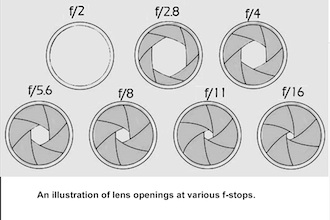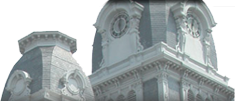What do f-stops do, anyway?
By Rex Dolby

The Van Wert Area Photography Club’s next regularly scheduled will be held on Thursday, April 14 at 7 p.m. In the weeks till then, we’ll try to explain some of the photography terms in a way that might be a little easier to understand. For this week let’s look at aperture, f-stops, and depth of field.
Located inside the barrel of a lens is a mechanism called the diaphragm. It changes the amount of light entering the lens as you turn a section of the barrel. Aperture is the term for how wide the diaphragm is set. The aperture numbers are ratios of the size of the actual opening in relation to the focal length of the lens (the distance between the lens and the point where the subject is in sharp focus) , usually in millimeters (mm). Each aperture setting (f/stop) is shown as an f-number on the side of the lens barrel. The f stands for fraction . The common aperture numbers in full stops are 1.4, 2, 2.8, 4, 5.6, 8, 11, 16, and 22.
The main thing to remember is that when you open the aperture up one stop (move left to the next smaller number) it lets in twice as much light. It will make your image brighter, but less will be in sharp focus. When you close the aperture down one f-stop (move right to the next larger number), you halve the amount of light getting to the sensor. That makes your photo darker but you increase the depth of field. Depth of field is the distance from the farthest point away from the lens to the point nearest the lens that’s in sharp focus. When the f-number is adjusted downwards to admit more light, selecting a lower f-number is termed “opening up” the lens. Selecting a higher f-number is termed “closing” or “stopping down” the lens.
An example of the use of f-numbers in photography is the Sunny 16 rule. An approximately correct exposure will be obtained on a sunny day at the beach or in winter by using an aperture of f/16 and the shutter speed closest to the reciprocal of the ISO speed set on the camera. For example, if you selected an ISO 200 setting, an aperture of f/16 and a shutter speed of 1/200 of a second would be used.
If this was new to you, I hope it was helpful.
POSTED: 03/23/16 at 2:38 pm. FILED UNDER: Camera Club News







